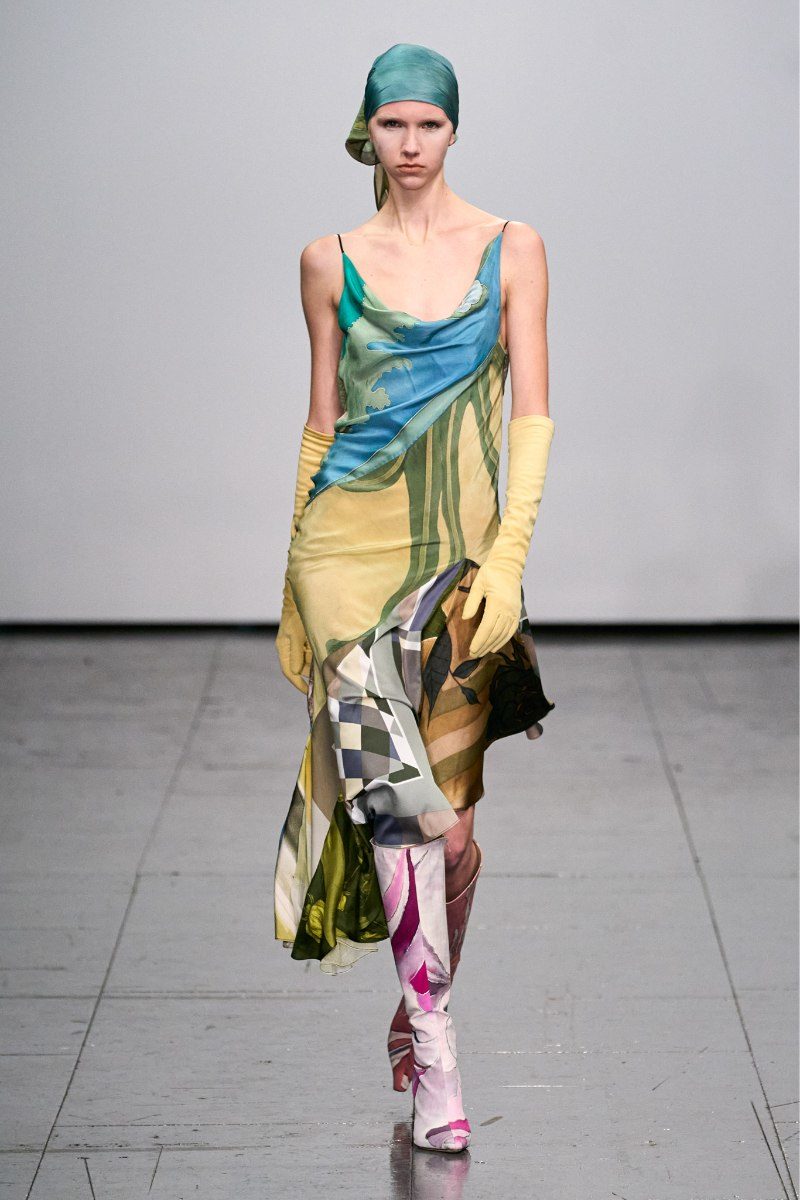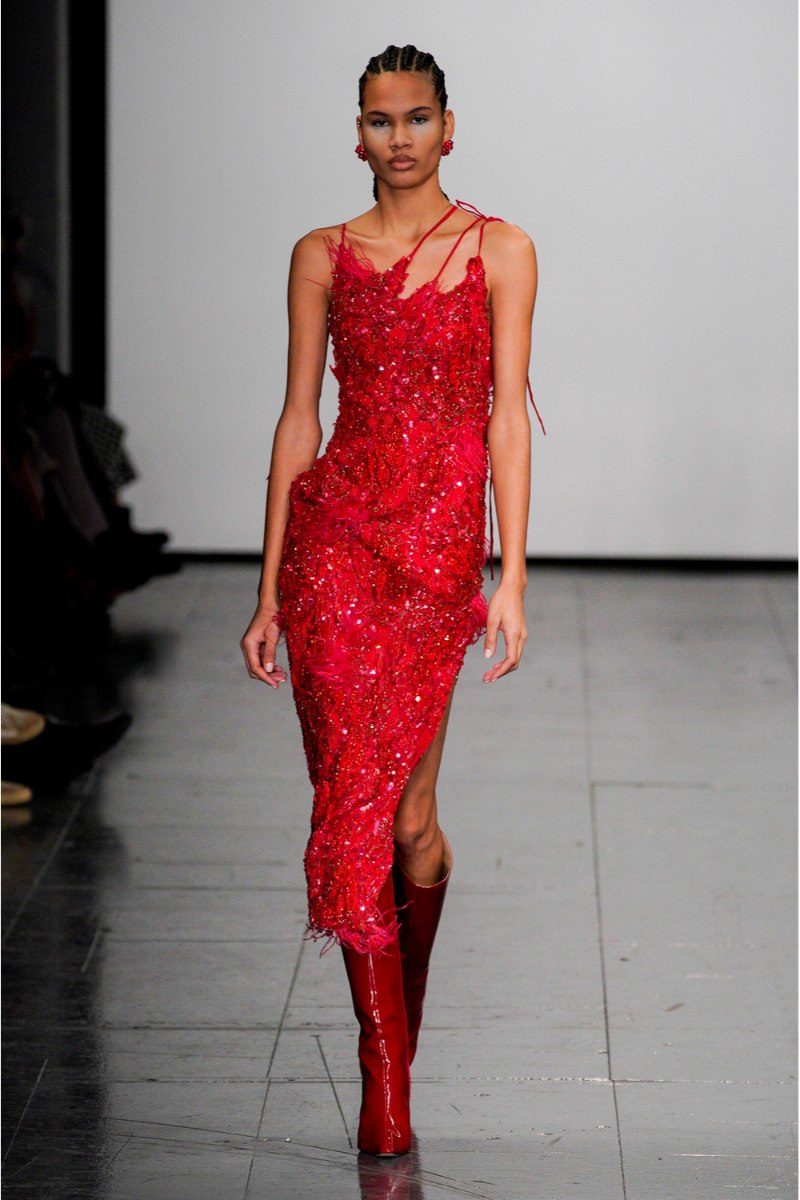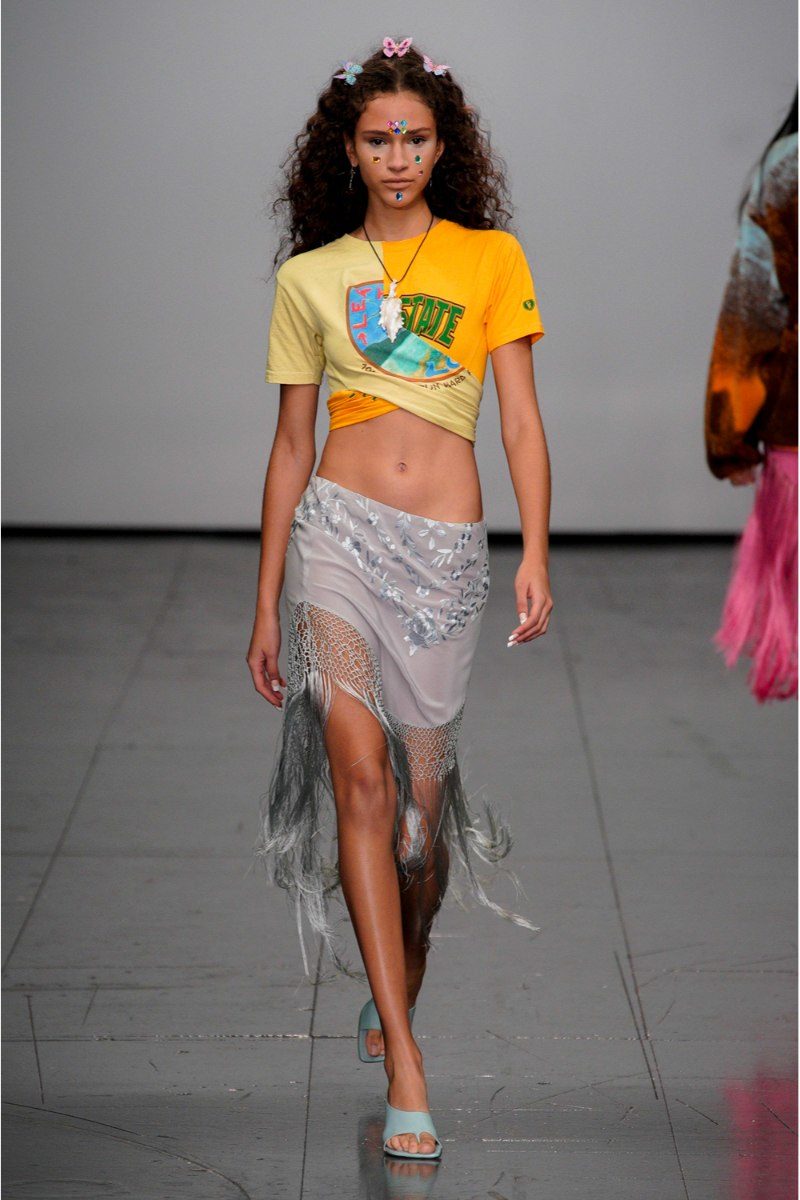“It sounds really cheesy,” Conner Ives blurted out before his London runway debut. “But honestly, this is something I’ve dreamed about doing since I was five years old.” It was a big rite of passage indeed for the young American alum of Central Saint Martins—a boy who grew up in Bedford, New York, secretly logging onto Style.com (the former internet site of Vogue Runway’s fashion reporting since the millennium) and watching Tim Blanks’s Fashion File interviews. “I heard then about Alexander McQueen and John Galliano going to Central Saint Martins, and I always knew I had to study there in London.”
Ives hasn’t exactly waited around to manifest his ambitions; so impatient was he to get going that he started to sell his “reconstituted” vintage scarf dresses from Instagrammed photos shot in the B.A. CSM studio in his first year at college, at age 21. In 2021, he graduated—in the misery year when no student was able to have a final runway show. Though that proved no barrier to (1) being able to build up a retail market for his reclaimed patchwork T-shirt dresses, (2) getting picked out by Andrew Bolton for a purchase that put a design of his in the Metropolitan Museum of Art’s Costume Institute and getting invited to the Met gala, and (3) being selected as a runner-up in last year’s LVMH Prize competition.
Well, if Central Saint Martins teaches one bottom-line rule, it’s always the individualistic insistence on students being true to their identities. That’s a lesson that Ives—even if he went against teachers’ disapproval when it was discovered that he was selling while studying—has patently taken as gospel. His show said that in every look, each one systematically named—for what he called “American archetypes”—after Y2K pop movie/reality show actors, actual girl clique leaders he knew in high school, hero-worshipped female relatives, and American women he has always fantasised about knowing.
Starting in reverse runway order, there was Ives’s vision of Carolyn Bessette-Kennedy as a bride in a sleeveless, bias-cut dress and matching headscarf-cum-train. He had a “Madam Vice President” look: a dream pitch for Kamala Harris to wear a Conner Ives cream and brown patchwork scarf dress. There was a cowgirl, representing an influential aunt in Santa Fe, wearing laser-printed denim and turquoise jewelry. And “The Editor,” an Ives fan note to Anna Wintour, thrown back to an evening in the 2000s when she wore a white tank and a red flounced flamenco-ish skirt designed by Oscar de la Renta for Balmain. Near the finale, Jackie Kennedy came out in a simple cream Watteau-back gown with a huge quilted patchwork star planted in its midsection.
A second lesson Ives has seriously taken to heart—as part of his Gen Z worldview, even more than schooling—is upcycling and repurposing. The sexy-skimpy glam and funny identifiable references might be the primary attractions of his kick-flares; leisure suits; and silk-fringed, piano-scarf dresses and skirts, but Ives sources all of it from deadstock and vintage garments and materials.
In other words, here was the first public outing of a very modern designer—fun and good times on the one hand, and on the other as much of a stickler as he can be about his production process. Rarely do those two things go together in contemporary fashion. Ives also intends to forgo the waste of showing every season. He plans to do a runway show only once a year. That’s smart. Why do more when his following is already so happily flocking?

1 / 7

2 / 7

3 / 7

4 / 7

5 / 7

6 / 7






